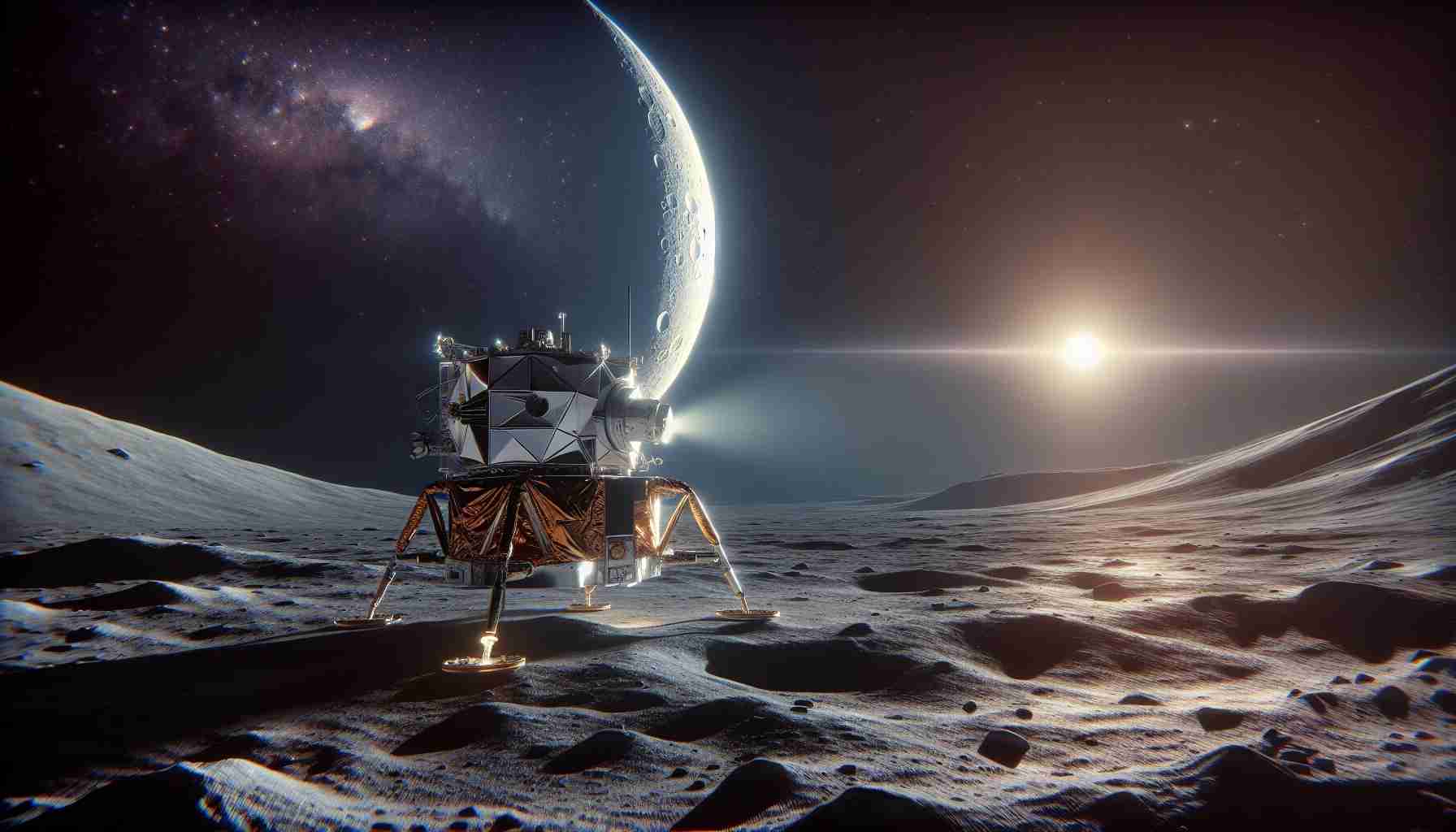Japan reached a significant milestone in space on Saturday, achieving its first-ever soft landing on the Moon, becoming the fifth country in the world to accomplish this feat.
However, shortly after landing, the Japan Aerospace Exploration Agency (JAXA) confirmed that the Smart Lander for Investigating Moon (SLIM) spacecraft was experiencing problems with its solar panels, and the mission would not proceed as planned. The team turned off the lander to conserve battery power while considering the next steps.
In a subsequent statement released on Thursday, JAXA revealed that the spacecraft was upside down on the surface of the Moon, likely due to an unstable landing after one of SLIM’s main engines failed during the descent.
We know this because JAXA shared an image of the spacecraft, taken by the Lunar Excursion Vehicle 2 (LEV-2) – a hand-sized device sent by SLIM and became the first robot to conduct fully autonomous research on the lunar surface.
JAXA also released computer-generated imagery showing SLIM in its final and quite unexpected position.
In the statement issued on Thursday, JAXA informed that the data collected before shutting down SLIM confirmed that the vehicle had reached the Moon’s surface about 55 meters east of the original landing site.
Taking into account the avoidance maneuver initiated at an altitude of about 50 meters, the accuracy of SLIM’s landing can be considered within 10 meters, and possibly even 3 meters. This is an important achievement, as the main aim of the mission was to demonstrate precise landing technology, aiming for an accuracy within 100 meters.
SLIM’s landing technology appears to be significantly better than that used in previous missions targeting areas the size of a mile. The SLIM system could play an important role in future moon missions, especially those aiming to land in areas with rough terrain, close to regions where water ice deposits are suspected – a resource that could potentially be converted into rocket fuel for lunar surface-to-Mars and beyond flights.
In the coming days, when the sun aligns southward, there is a possibility that SLIM will be able to recover energy and reengage in the mission.
FAQ section:
1. What achievement did Japan make in space?
Japan achieved its first-ever soft landing on the Moon, becoming the fifth country in the world to accomplish this feat.
2. What technical issues arose after landing?
The Smart Lander for Investigating Moon (SLIM) spacecraft had problems with its solar panels, preventing the mission from proceeding as planned.
3. Why is the spacecraft upside down on the surface of the Moon?
The spacecraft is upside down due to an unstable landing after one of SLIM’s main engines failed.
4. What data was collected by the Lunar Excursion Vehicle 2 (LEV-2)?
LEV-2 captured images of the spacecraft on the Moon’s surface, becoming the first robot to conduct autonomous research on the Moon.
5. What was the accuracy of SLIM’s landing?
SLIM’s landing accuracy can be considered within 10 meters, and possibly even 3 meters. The mission aimed to demonstrate precise landing technology.
6. How can SLIM be used in future moon missions?
SLIM could play an important role in future moon missions, especially those aiming to land in areas with rough terrain close to regions with water ice resources.
7. What is the potential goal of converting water ice into rocket fuel?
Water ice on the Moon could be converted into rocket fuel for lunar surface-to-Mars and beyond flights.
8. Will SLIM continue the mission?
Depending on solar energy recovery, there is a possibility that SLIM will be able to reengage in the mission in the coming days.
Definitions:
JAXA – Japan Aerospace Exploration Agency
SLIM – Smart Lander for Investigating Moon
Moon – Earth’s natural satellite
Suggested related links:
– JAXA Home
The source of the article is from the blog shakirabrasil.info
